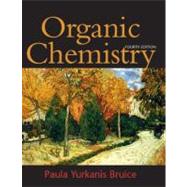
(NOTE: Each chapter concludes with Key Terms, Problems, and a Summary.)
I. AN INTRODUCTION TO THE STUDY OF ORGANIC CHEMISTRY
II. HYDROCARBONS, STEREOCHEMISTRY, AND RESONANCE.
III. SUBSTITUTION AND ELIMINATION REACTIONS.
IV. IDENTIFICATION OF ORGANIC COMPOUNDS.
V. AROMATIC COMPOUNDS.
VI. CARBONYL COMPOUNDS.
VII. BIOORGANIC COMPOUNDS.
VIII: SPECIAL TOPICS IN ORGANIC CHEMISTRY.
The New copy of this book will include any supplemental materials advertised. Please check the title of the book to determine if it should include any access cards, study guides, lab manuals, CDs, etc.
The Used, Rental and eBook copies of this book are not guaranteed to include any supplemental materials. Typically, only the book itself is included. This is true even if the title states it includes any access cards, study guides, lab manuals, CDs, etc.